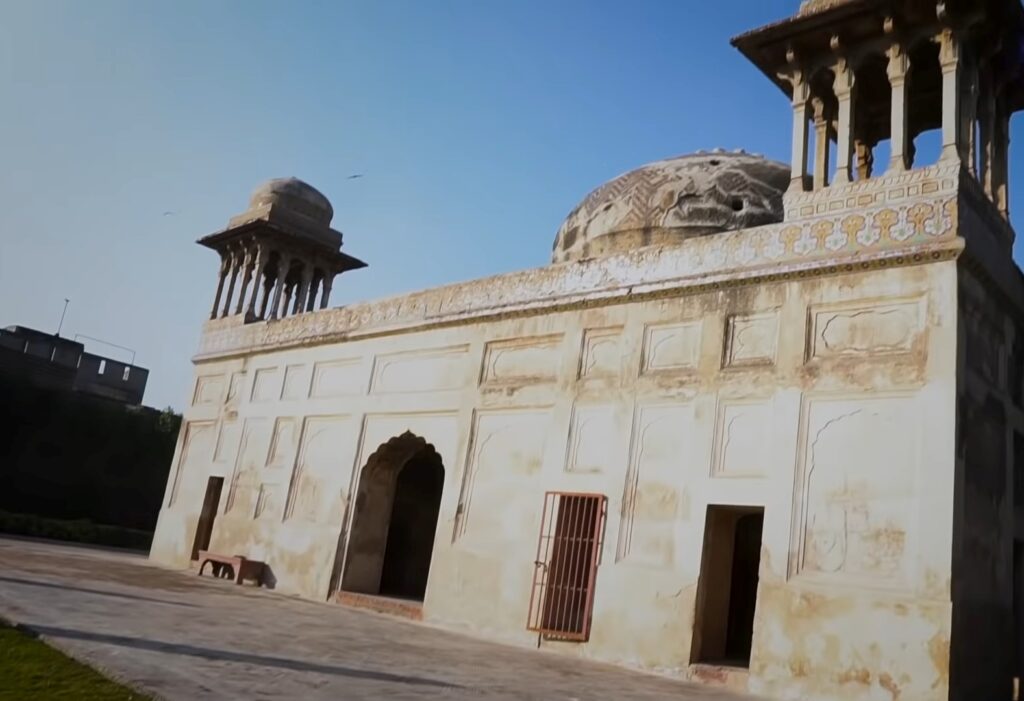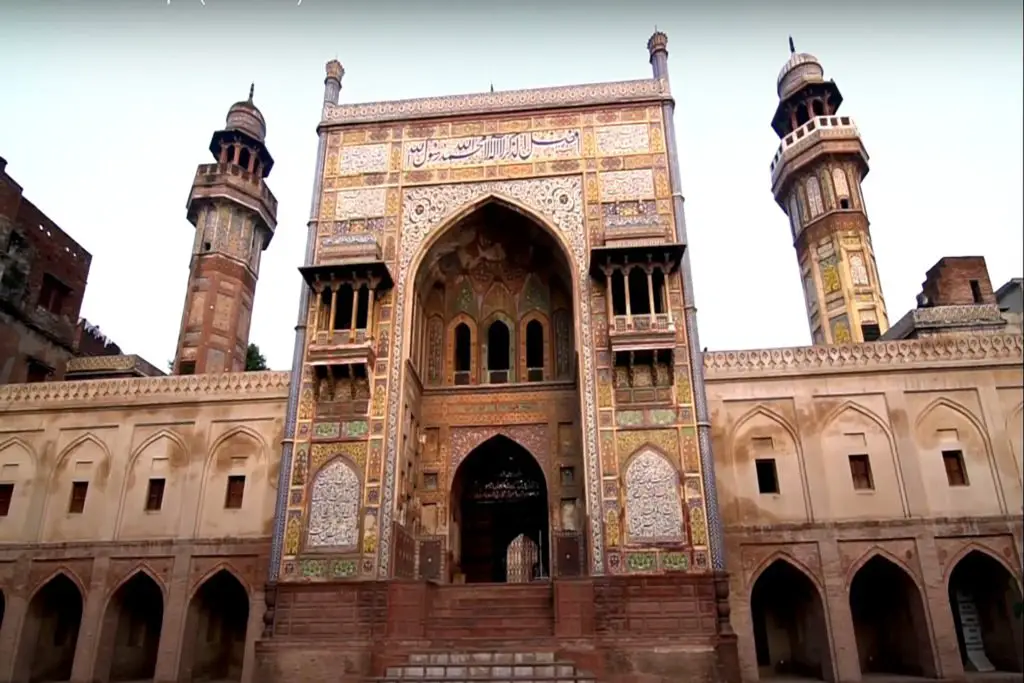Welcome to Lahore, Pakistan – a city known for its rich history, vibrant culture, and beautiful landmarks. Today, we’ll be exploring one of Lahore’s most fascinating historical monuments i.e. Gulabi Bagh Gateway also called the Dai Anga Tomb.
Gulabi Bagh, a delightful oasis nestled in the heart of Lahore, Pakistan, is a testament to the city’s rich cultural heritage. Translated as the “Pink Garden,” this historical site holds a special place in the hearts of locals and visitors alike. Let us embark on a journey to discover the fascinating history and captivating features of Gulabi Bagh.
History of Gulabi Bagh Dai Anga Tomb
Dai Anga was a wet nurse of Mughal Emperor Shah Jahan and later became the governor of Lahore during the reign of Emperor Aurangzeb. She was a powerful figure in the Mughal court and was respected for her intelligence, grace, and devotion.
The Tomb of Dai Anga also known as Gulabi Bagh (Pink Garden) was built in 1671 by Dai Anga herself, and it remains a stunning example of Mughal architecture. The tomb is located in the Begumpura neighborhood of Lahore and is easily accessible by car or public transportation. Its original purpose was to serve as a resting place for travelers along the Grand Trunk Road. Over time, the garden underwent several renovations and additions, resulting in the stunning architectural ensemble we see today.
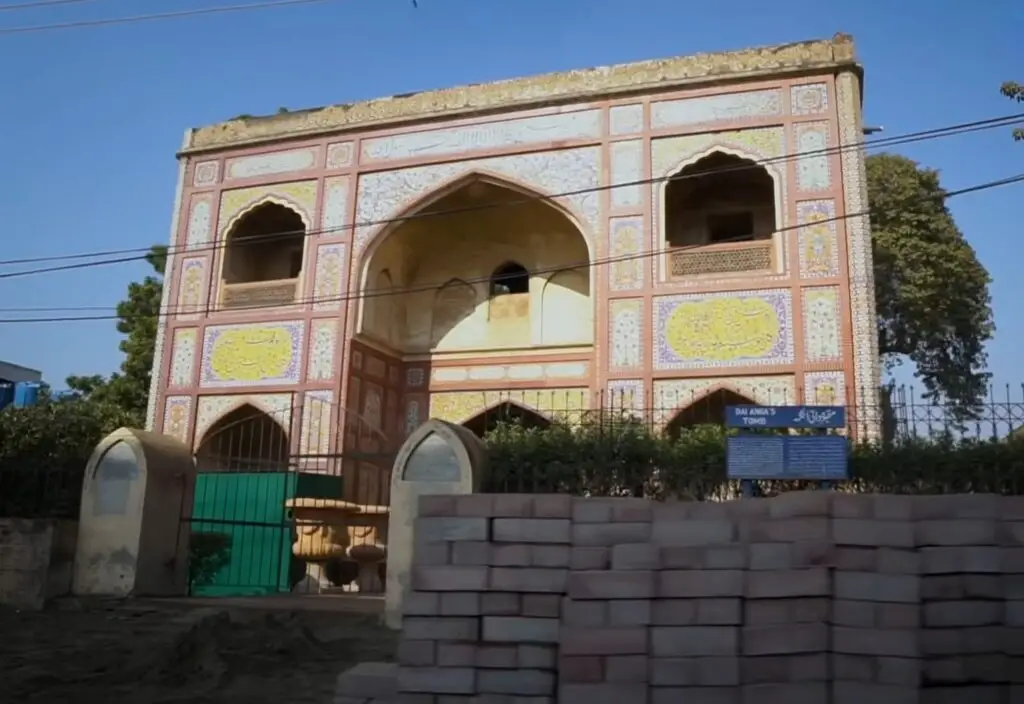
Architectural Marvels:
It boasts an array of architectural marvels that reflect the Mughal and Sikh influences prevalent in the region. At its center stands the grand Gulabi Bagh Gateway, adorned with intricate frescoes and delicate carvings. This impressive structure serves as the entrance to the garden and sets the stage for the visual splendor that awaits within.
As you approach the tomb, you’ll be struck by its grandeur and beauty. The intricate stonework and geometric patterns on the walls are a testament to the skill of the craftsmen who built it. The tomb is adorned with marble and sandstone carvings, which add to its elegance and grace.
Exploring the Pink Garden:
Once inside Gulabi Bagh, visitors are greeted by meticulously manicured lawns, fragrant flower beds, and towering trees providing shade and serenity. The symmetrical layout of the garden follows the traditional Persian chahar bagh style, divided into four quadrants by intersecting pathways.
Inside the Gateway, you’ll find a spacious chamber with a domed ceiling. The chamber is dimly lit, but the light that filters in from the outside illuminates the walls and highlights the intricate carvings. The tomb of Dai Anga is located in the center of the chamber, and it is surrounded by smaller graves and memorials.
The complex also includes a mosque, which is known as the “Dai Anga Mosque.” The mosque is located next to the tomb and is still used for prayers. Its walls are adorned with colorful tiles and intricate patterns, and its domed roof is an architectural marvel.
The garden surrounding the tomb is a peaceful and serene oasis in the heart of Lahore. The garden is well-maintained, and its lush greenery and colorful flowers provide a welcome respite from the hustle and bustle of the city.
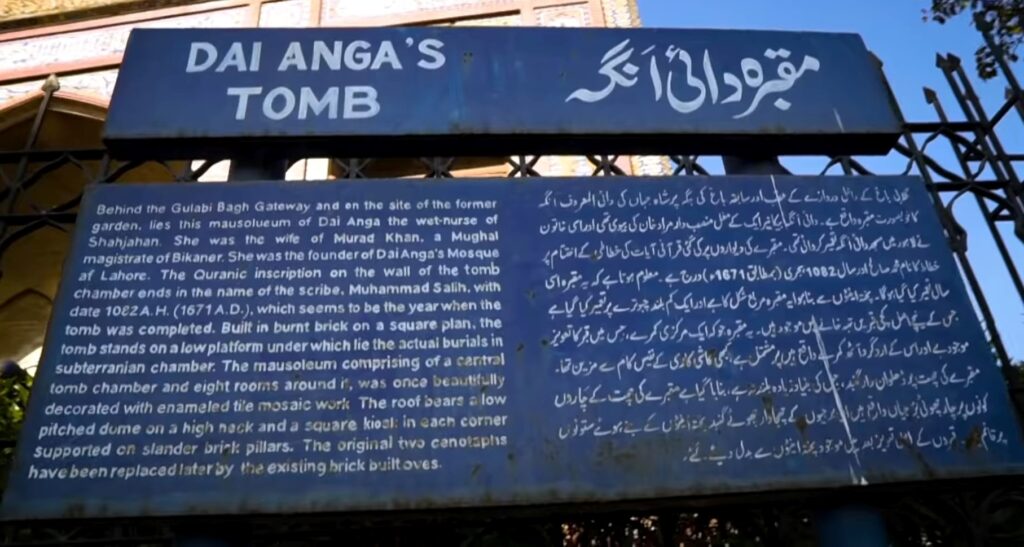
Noteworthy Features of Gulabi Bagh:
One of the prominent features of the garden is the centrally located Baradari. This elegant pavilion showcases the fusion of Mughal and Sikh architectural styles, adorned with intricate tile work and decorative motifs. The Baradari served as a meeting point for rulers, intellectuals, and artists, fostering intellectual and cultural exchange.
As you explore the Gateway, take a moment to reflect on the history and culture of Lahore. This stunning monument is a testament to the power and influence of the Mughal Empire, and it is a must-see for anyone interested in history, architecture, or culture.
Preservation Efforts:
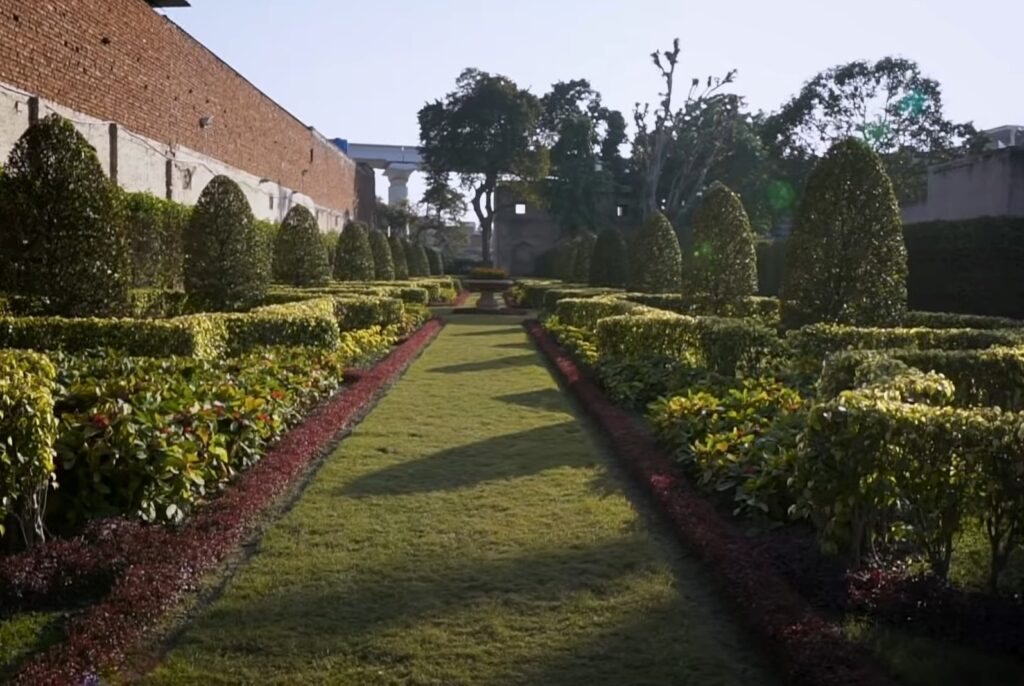
Recognizing the historical importance of the Pink Garden, various restoration and preservation initiatives have been undertaken to maintain its original grandeur. Conservation efforts include the restoration of frescoes, repairing damaged structures, and the installation of proper lighting to highlight the garden’s exquisite features.
It serves as a vibrant cultural hub, hosting a range of events and festivals throughout the year. From music concerts and art exhibitions to literary gatherings, the garden provides a picturesque backdrop for celebrations that revive the spirit of Lahore’s rich heritage.
Pink Garden, with its rich history, architectural beauty, and serene ambiance, is a treasure trove of Lahore‘s cultural legacy. As visitors stroll through its pathways, they can’t help but be transported back in time to an era of grandeur and artistic brilliance. The preservation and celebration of the Garden ensure that future generations can continue to appreciate and embrace the cultural heritage it represents.

